 W
WBattle of Al-Anbar was between the Muslim Arab army under the command of Khalid ibn al-Walid and the Sasanian Empire. The battle took place at Anbar which is located approximately 80 miles from the ancient city of Babylon. Khalid besieged the Sassanian Persians in the city fortress, which had strong walls. Scores of Muslim archers were used in the siege. The Persian governor, Shirzad, eventually surrendered and was allowed to retire. The Battle of Al-Anbar is often remembered as the "Action of the Eye" since Muslim archers used in the battle were told to aim at the "eyes" of the Persian garrison.
 W
WThe Battle of al-Qadisiyyah also spelled Qadisiyah, Qadisiyya, Ghadesiyeh or Kadisiya, fought in 636, was a decisive battle between the Arab Muslim army and the army of the Sasanian Empire of Persia during the first period of Muslim conquests.
 W
WThe Battle of Antioch took place in 613 outside Antioch, Turkey between a Byzantine army led by Emperor Heraclius and a Persian Sassanid army under Generals (spahbed) Shahin and Shahrbaraz as part of the Byzantine–Sassanid War of 602–628. The victorious Persians were able to maintain a hold on the recently taken Byzantine territory. The victory paved the way for further Sasanian advance into the Levant and Anatolia.
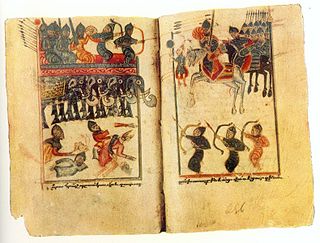 W
WThe Battle of Avarayr was fought on 2 June 451 on the Avarayr Plain in Vaspurakan between a Christian Armenian army under Vardan Mamikonian and Sassanid Persia. It is considered one of the first battles in defense of the Christian faith. Although the Persians were victorious on the battlefield, the battle proved to be a major strategic victory for Armenians, as Avarayr paved the way to the Nvarsak Treaty of 484 AD, which affirmed Armenia's right to practise Christianity freely.
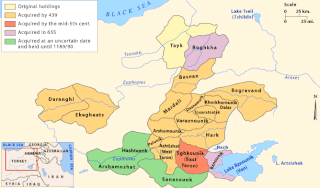 W
WBattle of Bagrevand, also called the Battle of Bagavan or the Battle of Vagabanta, was fought in 372, on the plain of Bagrevand, with the Roman-Armenian armies defeating the Sasanid forces.
 W
WThe Battle of Nineveh was the climactic battle of the Byzantine-Sassanid War of 602–628.
 W
WThe Battle of the Blarathon, also known as the Battle of Ganzak, was fought in 591 near Ganzak between a combined Byzantine–Persian force and a Persian army led by the usurper Bahram Chobin.
 W
WThe Battle of the Bridge or the Battle of al-Jisr was a battle at the bank of the Euphrates river between Arab Muslims led by Abu Ubaid al-Thaqafi, and the Persian Sasanian forces led by Bahman Jaduya. It is traditionally dated to the year 634, and was the only major Sassanian victory over the invading Muslim armies.
 W
WThe Battle of Sallasil or the Battle of Chains was the first battle fought between the Rashidun Caliphate and the Sasanian Persian Empire. The battle was fought in Kuwait (Kazima) soon after the Ridda Wars were over and Eastern Arabia was united under the authority of Caliph Abu Bakr. It was also the first battle of the Rashidun Caliphate in which the Muslim army sought to extend its frontiers.
 W
WThe Sasanian conquest of Egypt took place between 618 and 621, when the Sasanian Persian army defeated the Byzantine forces in Egypt and occupied the province. The fall of Alexandria, the capital of Roman Egypt, marked the first and most important stage in the Sasanian campaign to conquer this rich province, which eventually fell completely under Persian rule within a couple of years. An account of the event is given by A. J. Butler.
 W
WThe Battle of Firaz was the last battle of the Muslim Arab commander Khalid ibn al-Walid in Mesopotamia (Iraq) against the combined forces of the Byzantine Empire and the Sasanian Empire.
 W
WThe Battle of Hadhramaut took place between the armies of the Sasanian Empire under the command of Spahbed Vahrez and Aksumite forces under King Masruq ibn Abraha in 570. The Aksumite army was defeated by the Sassanids and Masruq was killed.
 W
WThe Hephthalite–Sasanian Wars, refers to a series of conflicts between the Hephthalites and the Sasanian Empire.
 W
WThe Hephthalite–Sasanian War of 484 was a military confrontation that took place in 484 between an invading force of the Sasanian Empire under the command of Peroz I and a smaller army of the Hephthalite Empire under the command of Khushnavaz. The battle was a catastrophic defeat for the Sasanian forces who were almost completely wiped out. Peroz, the Sassanid king, was killed in the action.
 W
WThe Battle of Hira was fought between the Sassanians and the Rashidun Caliphate in 633. It was one of the early battles of the Muslim conquest of Persia.
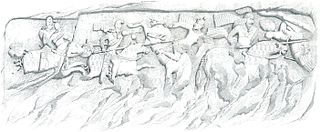 W
WThe Battle of Hormozdgan was the climactic battle between the Arsacid and the Sasanian dynasties that took place on April 28, 224. The Sasanian victory broke the power of the Arsacid dynasty, effectively ending almost five centuries of Parthian rule in Iran, and marking the official start of the Sasanian era.
 W
WThe Battle of Martyropolis was fought in summer 588 near Martyropolis between an East Roman (Byzantine) and a Sassanid Persian army, and resulted in a Byzantine victory.
 W
WBattle of Muzayyah was between the Muslim Arab army and the Sasanian Empire. When Khalid ibn Walid left from Ayn al-Tamr to Dumat Al-Jandal for the help of Iyad ibn Ghanm, the Persian court believed that Khalid had returned to Arabia with a large part of his army. The Persians decided to throw the Muslims back into the desert and regain the territories and the prestige which the Persian Empire had lost. The Persians had resolved not to fight Khalid again, but they were quite prepared to fight the Muslims without Khalid ibn al-Walid.
 W
WThe Battle of Nahavand, also spelled Nihavand or Nahawand, was fought in 642 between Arab Muslims and Sassanid armies. The battle is known to Muslims as the "Victory of Victories." The Sassanid King Yazdegerd III escaped to the Merv area, but was unable to raise another substantial army. It was a decisive victory for the Rashidun Caliphate and the Persians consequently lost the surrounding cities including Spahan.
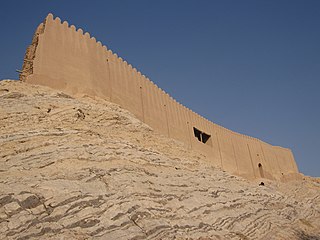 W
WThe Battle of Ray was fought between the Sasanians and the Rashidun Caliphate in 651. It was also part of the rivalry between the Ispahbudhan family and the Mihran family.
 W
WThe Shapur II's Arab campaign took place in 325, against numerous Arab tribes, due to the Arab incursions into the Sasanian Empire. Shapur II decisively defeated all the Arab tribes during his campaign, and became known as Dhū al-Aktāf to the Arabs, meaning “he who pierces shoulders”.
 W
WThe Battle of Spahan was fought between the Rashidun Caliphate and the Sasanian Empire in 642. The Arabs were victorious during the battle, where they reportedly killed the Mihran commander Shahrvaraz Jadhuyih. After the battle, the Arabs made peace with Fadhusfan, the governor of the city. According to Abu No'aym, many people were killed or enslaved after the conquest and the settlement pattern of the region changed. Isfahan capitulated by 644 after a few failed revolts and treaties for paying taxes and tributes in exchange for military protection were drawn up.
 W
WSukhra's Hephthalite campaign took place in 484 between the Hephthalites and the Sasanian Empire.
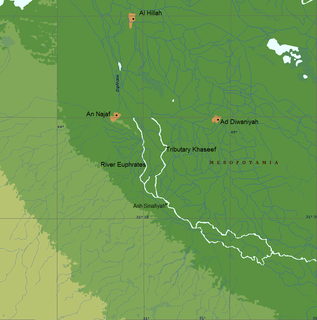 W
WThe Battle of Ullais was fought between the forces of the Rashidun Caliphate and the Sassanid Persian Empire in the middle of May 633 AD in Iraq, and is sometimes referred to as the Battle of Blood River since, as a result of the battle, there were enormous amounts of Sassanian and Arab Christian casualties.
 W
WThe Battle of Walaja was a battle fought in Mesopotamia (Iraq) in May 633 between the Rashidun Caliphate army under Khalid ibn al-Walid and Al-Muthanna ibn Haritha against the Sassanid Empire and its Arab allies. In this battle the Sassanid army is said to have been two times the size of the Muslim army.